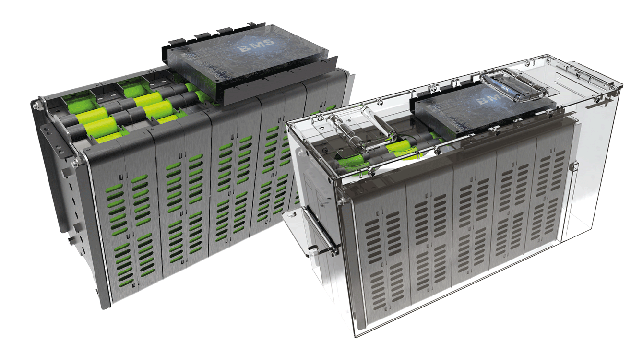
Brief Tips:
— Use according to the instructions (generally at temperatures from -20°C to 60°C).
— Charge the battery between 10°C and 45°C. (If it has been exposed to cold, let it warm up before charging).
— Use the original charger.
— Avoid fully discharging it to 0%.
— Store it at temperatures between 10°C and 25°C with a charge level between 50% and 80%.
— Avoid mechanical damage to the casing and keep the connectors clean.
Temperature
The most important aspect for your battery’s “health” is the temperature regimen. The operation of any battery depends on a chemical reaction, the speed of which varies with temperature. Most batteries work most efficiently between 20°C and 25°C. The manufacturer always indicates the permissible temperature ranges for charging and using the battery.
For example, the following parameters apply to the original Sur-Ron battery:
— Usage and storage: -20°C to 60°C.
— Charging: 10°C to 45°C.
It is important to note that the biggest danger is overheating, which can result from stressful charging or discharging or from external factors. Low temperatures do not cause as much damage to a lithium battery as overheating. The battery simply won’t be able to deliver its full power, but once warmed up to its operating temperature, the properties of its electrolyte will be restored.
To prevent overheating during charging and discharging, the battery casing is equipped with a special device called BMS (Battery Management System). It is equipped with sensors that monitor temperature, currents, and voltages throughout the battery’s operation cycle. If an abnormal situation occurs, the device will put the battery into emergency mode.
Tips:
— Follow the temperature regimen indicated by the manufacturer.
— Do not leave the battery under direct sunlight, near heat sources, or open flames during charging or storage.
— Never charge the battery if its temperature is below 0°C.
— In winter, keep the battery in a warm place before installing it on the bike. Batteries heat up during discharge, which will help maintain their characteristics, even in prolonged cold conditions.
Charger
To charge lithium-ion (Li-Ion) batteries, the CC/CV (Constant Current/Constant Voltage) algorithm is used, which first involves charging at a constant current and then at a constant voltage. The battery charges in two stages:

— In the first stage, a constant charging current is maintained, varying between 0.5C and 1C. During this stage, the voltage at the terminals increases rapidly.
— When 80% of the battery’s capacity is reached, the second charging stage begins, during which the voltage is kept constant and the current gradually decreases to values between 0.05C and 0.1C. Once these values are reached, the charging cycle ends.
Modern, fully automated chargers carry out the entire charging cycle. The device is synchronized with the battery’s BMS and automatically selects the appropriate charging mode, shutting off automatically at the end of the cycle.
Tips:
— If you do not have adequate knowledge, do not use non-original chargers. Overcharging or overheating may cause a fire.
— Ensure the cooling fan of the charger is not obstructed.
— With original chargers, it is normal for them to briefly turn on again after the charging cycle is complete. Do not worry about this.
Lifespan
A characteristic of lithium-ion batteries is the absence of the “memory effect,” so they can be charged without waiting for a full discharge.
Many manufacturers calculate the battery’s lifespan based on the number of complete discharge cycles (down to 0%). The average for high-quality batteries is 400 to 600 discharge cycles. However, this indicator can be increased by reducing the Depth of Discharge (DoD).
The Depth of Discharge (DoD) is the percentage of capacity that has been consumed before recharging the battery. For example, if you start charging it when the indicator shows 20%, the Depth of Discharge would be 80%.
Tips:
— To extend the lifespan of the lithium-ion battery, try charging it frequently without waiting for it to completely discharge.
— If possible, reduce the Depth of Discharge (DoD). This will increase the battery’s lifespan.
Maintenance and Storage
When you are not using the Sur-Ron battery for an extended period, you need to create the proper conditions for storage. Due to the characteristics of the batteries, they should not be stored fully charged or fully discharged, as this could severely impair their performance. The ideal storage conditions are at room temperature and with an intermediate charge, around 3.6V per cell.
These batteries do not require maintenance in the traditional sense. However, even when following all recommendations, due to the battery’s structure, a voltage imbalance can occur between the groups of cells connected in parallel, which in extreme cases could impair the battery’s overall performance. Modern BMS systems partially solve this issue, but to fully balance the battery, it must be done by a specialist with the appropriate equipment, performing a partial disassembly of the battery.
Tips:
— Avoid mechanical damage to the battery, connectors, and discharge cables.
— Keep the battery contacts and connector clean. If there is poor contact, the connectors may heat up and melt.
— Always turn off the circuit breaker when connecting or disconnecting the battery. If the switch is on when connecting/disconnecting, the contacts may spark and burn, which could worsen the contact and cause heating.
— Store the battery at temperatures between 1°C and 25°C, and keep the charge between 50% and 80% during storage.
— Monitor the battery’s condition. Every two seasons, check the remaining capacity and, if necessary, balance the battery.
